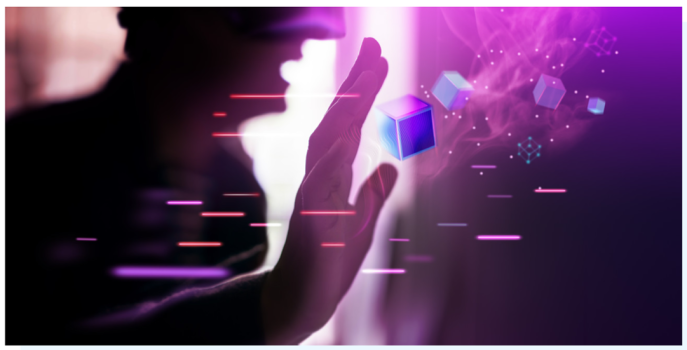K
Kathleen Martin
Guest
How Blockchain works
Blockchain is a mechanism for creating a distributed ledger that by design is impossible to hack or change. This distributed database allows multiple parties to participate, view and audit the data contained inside each block. The data on a blockchain can't be modified, which makes this system so valuable. All kinds of information can be put in these blocks, and powerful cryptography protects them from any leak.
A bit of History
As years went by, Blockchain development underwent important stages. In Stage 1 (around 2009), Blockchain was used by Satoshi Nakamoto for his Bitcoin network. It allowed to set up the basic premise of a shared ledger that maintains a cryptocurrency network. Each transaction is approved in a verification process throughout multiple computer members of the network, and then a block with this information is added to the chain. This groundbreaking innovation meant a strong transaction network without the need for a central authority.
Time went on, and the second stage of Blockchain began thanks to Ethereum which introduced the concept of Smart Contracts. It allowed developers to write and run programs inside a block, and thanks to that, all kinds of trust agreements are self-managed, with no need for outside entities. The programs inside a block can monitor every aspect of an agreement, from its beginning to its execution. With this technology, Blockchain can be used for identity management, supply chain, real estate, and so on.
More than Cryptocurrencies
Nowadays, a world of possibilities has opened with Smart Contracts, and we currently can create secure and decentralized applications. More and more companies are already working with different MVPs or initial developments based on blockchain. Here are five examples:
1. Initial coin offerings
ICO is a digital crowdsource funding model that uses Smart Contracts and cryptocurrency. It became a popular method to raise funds for products and services. The $5.3 billion boom in ICOs in 2017 challenged traditional venture capital. Now many businesses are using this model to raise capital for their projects.
2. Insurance
The insurance industry spends tens of millions of dollars each year on processing claims. Not only that, but it also actually loses millions of dollars to fraudulent claims. Smart contracts could also help improve the process of claim processing in many ways.
3. Voting
Blockchain can be used to validate a voter‘s identity and record their vote. This information could then be used to initiate an action after all voting had ceased. Since the blocks within a blockchain are impossible to alter once they have been recorded, manipulation of this record would not be possible.
4. Transport and logistics
The transport and logistics sector is becoming increasingly digitized as supply chain management and visibility remain as important as ever, and both are key areas that can be improved by blockchain. Retail companies like Walmart are already leveraging this technology for food traceability.
Continue reading: https://intive.com/insights/why-blockchain-is-much-bigger-than-cryptocurrency
Blockchain is a mechanism for creating a distributed ledger that by design is impossible to hack or change. This distributed database allows multiple parties to participate, view and audit the data contained inside each block. The data on a blockchain can't be modified, which makes this system so valuable. All kinds of information can be put in these blocks, and powerful cryptography protects them from any leak.
A bit of History
As years went by, Blockchain development underwent important stages. In Stage 1 (around 2009), Blockchain was used by Satoshi Nakamoto for his Bitcoin network. It allowed to set up the basic premise of a shared ledger that maintains a cryptocurrency network. Each transaction is approved in a verification process throughout multiple computer members of the network, and then a block with this information is added to the chain. This groundbreaking innovation meant a strong transaction network without the need for a central authority.
Time went on, and the second stage of Blockchain began thanks to Ethereum which introduced the concept of Smart Contracts. It allowed developers to write and run programs inside a block, and thanks to that, all kinds of trust agreements are self-managed, with no need for outside entities. The programs inside a block can monitor every aspect of an agreement, from its beginning to its execution. With this technology, Blockchain can be used for identity management, supply chain, real estate, and so on.
More than Cryptocurrencies
Nowadays, a world of possibilities has opened with Smart Contracts, and we currently can create secure and decentralized applications. More and more companies are already working with different MVPs or initial developments based on blockchain. Here are five examples:
1. Initial coin offerings
ICO is a digital crowdsource funding model that uses Smart Contracts and cryptocurrency. It became a popular method to raise funds for products and services. The $5.3 billion boom in ICOs in 2017 challenged traditional venture capital. Now many businesses are using this model to raise capital for their projects.
2. Insurance
The insurance industry spends tens of millions of dollars each year on processing claims. Not only that, but it also actually loses millions of dollars to fraudulent claims. Smart contracts could also help improve the process of claim processing in many ways.
3. Voting
Blockchain can be used to validate a voter‘s identity and record their vote. This information could then be used to initiate an action after all voting had ceased. Since the blocks within a blockchain are impossible to alter once they have been recorded, manipulation of this record would not be possible.
4. Transport and logistics
The transport and logistics sector is becoming increasingly digitized as supply chain management and visibility remain as important as ever, and both are key areas that can be improved by blockchain. Retail companies like Walmart are already leveraging this technology for food traceability.
Continue reading: https://intive.com/insights/why-blockchain-is-much-bigger-than-cryptocurrency

